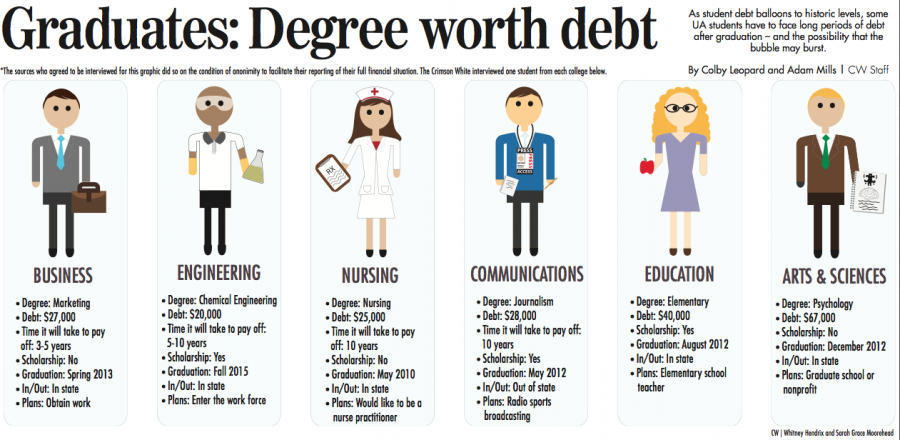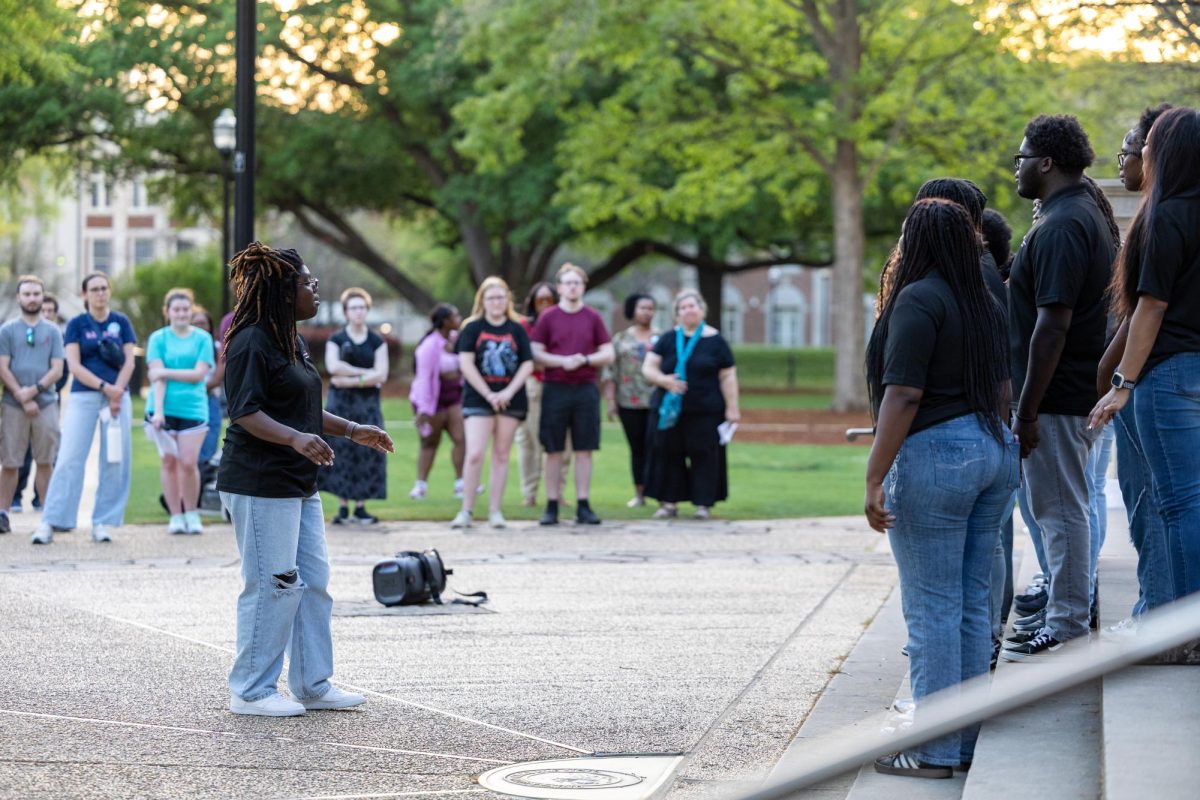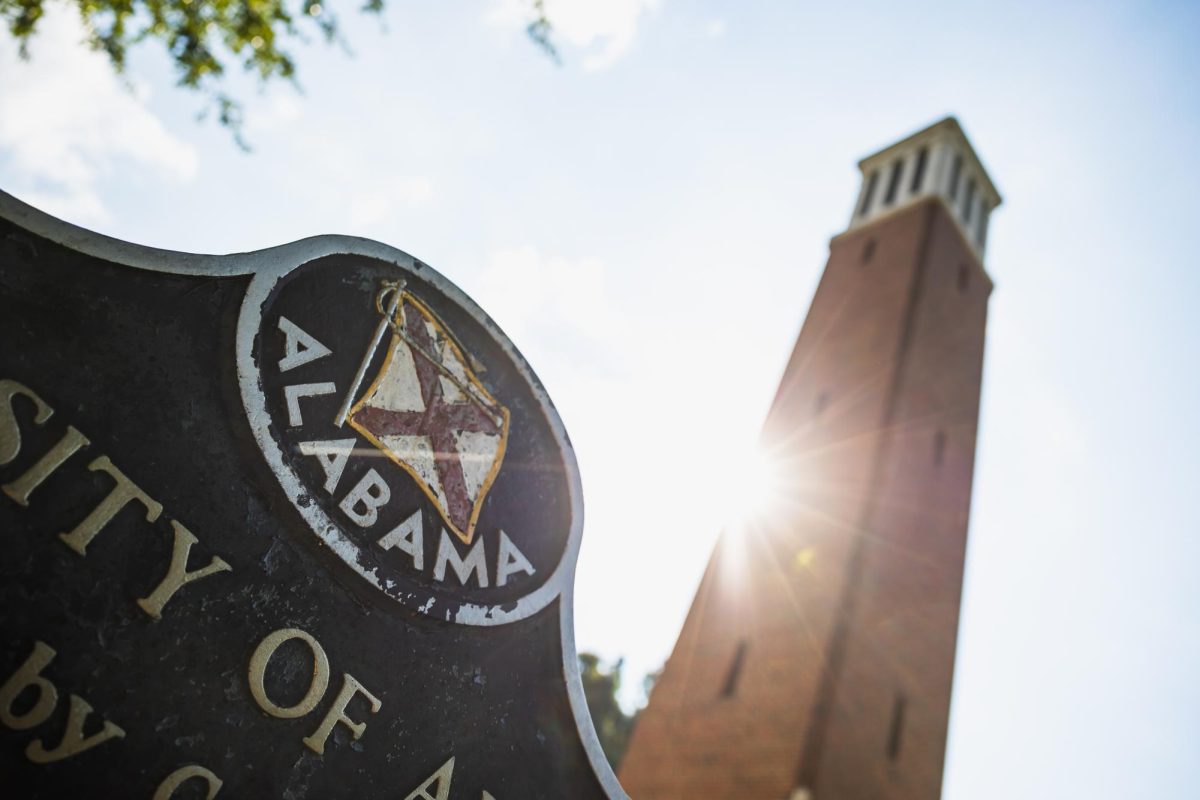University of Alabama graduate Chris Izor took out direct student loans in order to graduate with an English degree and nearly $31,000 in debt that he hopes to pay off within the next 10 years. Although he has a payment plan, Izor joins many students in wondering how the debt will ever go away.
For Izor, the process started with a job with A+ College Ready, a statewide nonprofit that develops and supports Advanced Placement courses in math, science and English. Although he considers himself fortunate to have a job that pays well and allows him to make payments on his student debt, Izor does not attribute his job to his major.
“My English degree didn’t help me get my job, and it doesn’t help me with my email communication or ability to plan a study session,” Izor said. “But the fact that I worked and got a degree shows that I have the wherewithal to operate in the professional world. By the end of 2009, it didn’t matter what degree you were graduating with, you were going to struggle financially, so you might as well study something you love before you enter the workforce doing something you don’t love.”
According to a recent study done by The New York Times, Izor is not alone in having significant student debt to pay off after his graduation. The report states that the average debt accumulated over four years by a University of Alabama student in 2010 was $26,701.
Dean J. Michael Hardin of the College of Commerce and Business Administration recently wrote about the student debt crisis and its comparisons to the real estate bubble.
Hardin said in the real estate crisis, there was over-buying and over-lending — even predatory lending — but educators don’t bear resemblance to the culprits of the real estate crisis.
“Colleges are like the builders of the houses,” Hardin said. “I don’t remember the builder being sanctioned. It was the lenders.”
Hardin said there may be more to consider than money.
“Life may be a lot more than simply economics,” he said. “College offers the hope of a sincere and dedicated educational experience. It’s life changing. What’s the [return on investment] of piano lessons? A pure focus on economic ROI misses what the college investment can provide. How do you put a price tag on gaining an appreciation for Milton’s Paradise Lost?”
Hardin called for a number of measures to battle the student debt crisis and make college more affordable and UA students more competitive, including workplace education, college mentoring, multiple faster paths to advanced degrees and public discourse.
Alex Austin graduated from the University with a degree in journalism in OVERSET FOLLOWS:May 2012. Austin is, after interest, $28,000 dollars in debt from his education. He favors a college system like some in Europe with more government funding of education as well as structural changes.
“The liberal arts system needs to die,” he said. “The reason college takes four years is because you have to take all these classes that you don’t need and are unnecessary in the long run. In Europe, you get a bachelor’s [degree] in three years. They teach the liberal arts in high school.”
Austin said college education should come at no cost to students.
“It is the job of the education system to help the next generation grow and succeed,” he said. “This cannot happen when you have graduates who are forced to live with their parents because after paying off some of their debt each month, they don’t have enough money to afford their own apartment.”
Austin partly blames the economy but says it will eventually get better and should not take all of the blame.
“What is apparently not going to change is that college is going to get more and more expensive,” Austin said. “This system cannot be allowed to go on like this because if it does, it will collapse the country’s entire infrastructure from the top down.”
Leonard Zumpano, professor of finance, attributed the rise in student debt to rising tuition.
“There’s no question about cause and effect,” he said, also stating rises in tuition and student debt are closely linked. “How long can this continue?”
When asked about the student debt crisis and its comparison to the real estate bubble, Zumpano said the two weren’t analogous, but there were some similarities.
“Does that imply that it’s going to burst?” he said. “Anybody who thinks they can tell you that is probably nuts.”
He said the shortage of skilled tradespeople combined with other educational options, such as technical schools and community colleges could lure some students away from larger universities.
As competition for post-graduation jobs increases, Zumpano said, so does the need to distinguish yourself as a student.
Ideally, students would gain skills that enable them to communicate effectively from attending a college that provides a traditional liberal arts education.
“If money weren’t an object, I’d [say] get a liberal arts education, and then you specialize,” Zumpano said. “That’d be nice, but it’s not so much an option now.”
Structural changes in the institution of universities also remain potential players in the developing situation, he said.
“Universities are expanding and incurring debt,” he said. “If the [number of] students aren’t increasing, it’s going to be a problem.”
Zumpano said the rate of increasing tuition costs has exceeded the rate of inflation.
“The housing boom bubbled and burst,” he said. “I don’t know if [the student debt crisis] will burst. God, I hope not.”
Despite his debt, Izor said college was ultimately worth the investment.
“Take on debt if you need to but realize college is not something that comes before life,” Izor said. “You can work for your own money, control your own decisions and start making plans for your life long before you get graduation emails.”









